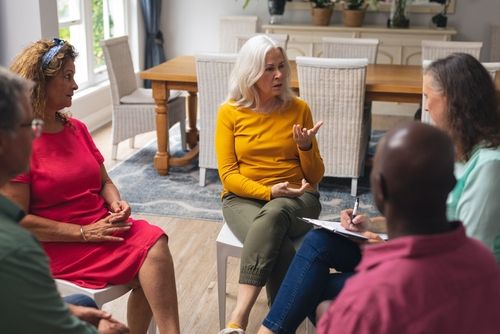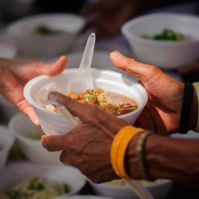 People are drawn to faith communities for a variety of reasons. Some come to learn more about God, while others are interested in finding their place in the world. Others may attend services to make their families happy or because they enjoy the social aspect of gathering with others who share their faith.
People are drawn to faith communities for a variety of reasons. Some come to learn more about God, while others are interested in finding their place in the world. Others may attend services to make their families happy or because they enjoy the social aspect of gathering with others who share their faith.
Some people who are part of your church family may desperately want to get to know others better and form real friendships. They just don't know where to start. This is where a relationship outreach group can help. It is a way to intentionally offer social opportunities for people in your community, and it can be vital for staving off loneliness or other feelings of isolation.
Phase 1: Gauge Interest
When you see a need for a relationship outreach group, you may want to jump right in and start planning events. To ensure its long-term success, however, it makes more sense to discover what the real social needs of the congregation are first.
Create a survey to send to members to gauge their interest. It's convenient to have an online survey, and most of the church will probably answer it there. Make sure you also print out a few copies for those who either don't have access to the internet or who would rather fill out a paper form, as these may also be the people most in need of the group. You can ask a few yes-or-no questions about their general interest in the project or their willingness to volunteer time and space, but most of the questions should be open-ended:
- What social activities do you prefer?
- What hobbies or pastimes would you like to share with or teach to others?
- What accommodations would you need in order to participate in the program?
Phase 2: Form Your Team
The next step is forming a planning committee. Your survey results will likely reveal which members are the most enthusiastic about a relationship outreach program. Reach out to them to see if they'd like to help it get off the ground. They will probably have a lot of creative ideas, and their excitement about the project can inspire others to attend events.
It's important during this phase to set expectations and boundaries. Team members should be able to express their ideas freely but also understand that they are there to serve the congregation by meeting the needs indicated by the survey data. Starting off your first team meetings with the expectation that everyone will remain flexible allows you to establish healthy ground rules for interactions.
Phase 3: Engage the Congregation
The beauty of a relationship outreach program is that it doesn't have to be complicated to be effective. Plan a few events that meet at different times of the week. That way, there is likely to be at least one opportunity that fits most people's schedules.
Keep in mind that, as more people get involved, the program is likely to take on a life of its own. People may start by just coming to your events, but as they get to know other people with whom they have something in common, they may branch out and plan outings of their own. This is perfectly normal. In fact, it's proof that your relationship outreach program is working!
There may be many people in your church who want to form closer relationships with others but don't know where to start. A relationship outreach program can help them meet new people or give them space to develop deeper bonds with those they already know. No matter what brings them to your church, your events can help them discover their place in the community.



